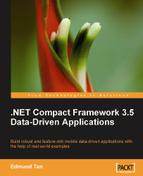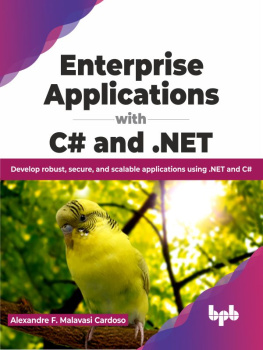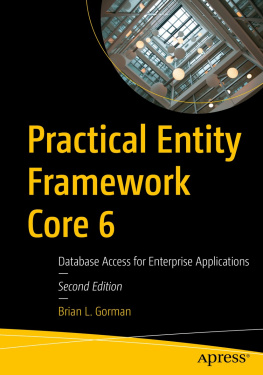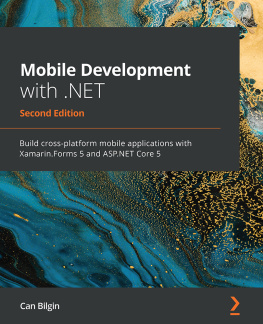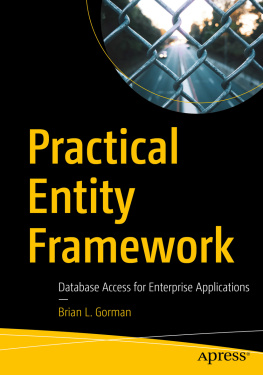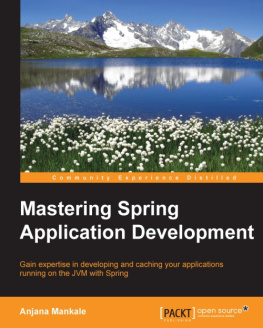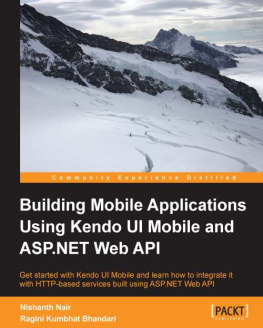About the Author
Edmund Tan is the CTO and co-founder of a leading e-forms and workflow solution vendor based in Singapore. He holds more than eight years of experience building performance-critical .NET e-forms and workflow solutions for smart devices on top of Oracle and Microsoft SQL Server databases for large companies and governmental institutions located in Singapore and Malaysia. Edmund is also a regular public speaker at various conferences held in Singapore and Malaysia on the topic of on-the-go BPM (Business Process Management) hosted on smart device technologies. During his free time, Edmund works on trying to create machines capable of emulating human thought.
My first and heartfelt word of thanks goes out to David Barnes without whom this book would not have been possible at all. I also thank James Lumsden for giving my e-mail a chance, Rakesh Shejwal and Greg, my long-time collaborator, for their always insightful edits, Srimoyee Ghoshal for keeping me on schedule, Lata Basantani, as well as everyone else involved in this book at Packt.
I extend my gratitude to my parents, Laumee and Obagi, for their undying love and support, my aunt Laumar for instilling the bookworm in me, my wife Shen for keeping the beverages flowing, my kid Sophie simply for being the pride of my life, and, last but not least, my brother Edwin for his jokes during the really, really late hours of the night.
About the Reviewer
Greg Yap is a tech-savvy person who's always interested in the latest technology. He has worked on .NET since its first release. He has experience in developing software for small, medium, and enterprise-sized companies around the world and has worked on Microsoft technologies for a variety of platforms including the .NET Compact Framework. He is also well versed in the C# and VB.NET programming languages.
I would like to thank my family, especially my understanding wife Jennie who's given me all the support and time I needed to review this great book. To my two kidsthank you! I'm glad that both of you have shown the patience I knew you would. My thanks also go out to my friend Edmund for having considered me as the technical reviewer for this bookI owe you a coffee! Last but not the least, I would like to thank Srimoyee Ghoshal for always being there to keep me on time and the remaining Packt Publishing team for giving me the opportunity to review this book.
Preface
As business systems become increasingly distributed, the mobile device becomes an increasingly important tool on the enterprise stage. The large amount of processing power available to mobile devices nowadays bring to it a whole new range of possibilities as a mobile extension to traditional server-based enterprise systems.
Harnessing this power is the .NET Compact Framework, which has seen tremendous improvements over the last few versions. The .NET Compact Framework provides a rich set of managed classes that does away with a big chunk of the menial labor required to perform common tasks, leaving the developer to focus on building business logic instead.
This book is not intended to be a complete reference tome of the .NET Compact Framework. There are numerous books and documentation online that serve this purpose. Rather, it will show you how to apply the .NET Compact Framework in interesting ways to solve real-world business problems. We will explore commonly encountered design decisions and technology comparisons along the way and ultimately build clean solutions that keep to best practices such as the three-tier design and the Model View Controller (MVC) model.
Using a sales force application as the central example and theme in this book, you will have a clear step-by-step guide on building one of the most popular types of business applications in the market today from ground up. Through these pages, you will learn how to create robust data-driven mobile applications that work seamlessly with other mobile devices and database servers. You will get to explore the little nuances of .NET Compact Framework programming, and how to get around them using its advanced features. You will also get a firsthand look at how you can use third-party libraries such as the open source Smart Device Framework to add a host of rich functionality to your applications.
Towards the end of this book, you will have accumulated enough understanding of the capabilities and limitations of the .NET Compact Framework and its tools to confidently tackle an enterprise mobile application of any size or complexity.
I hope in the process of getting there you will have as much fun reading this book and trying out the samples as I had writing it.
What this book covers
also outlines the four different mobile client models and a comparison of their strengths and weaknesses.
, Building the Data Tier , shows how a plugin-based data tier based on both the Microsoft SQL Server Compact and Oracle Lite databases can be created using ADO.NET.
, Building the Mobile Sales Force Module , walks the reader through building the logic and presentation tiers of the mobile sales force application, illustrating various concepts along the way such as UI object reusability, validation, paging, record navigation, sorting, and grouping.
, Building Search Functionality , illustrates how full-text search and parameterized-search functionality can be added to the mobile sales force application.

